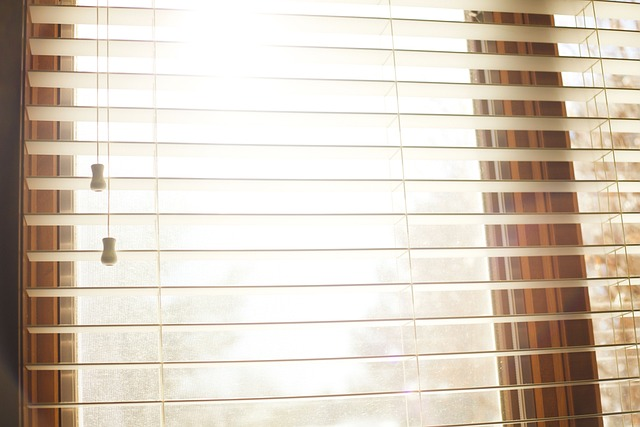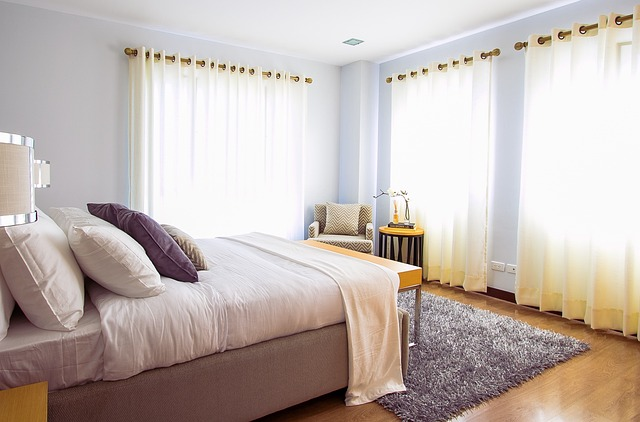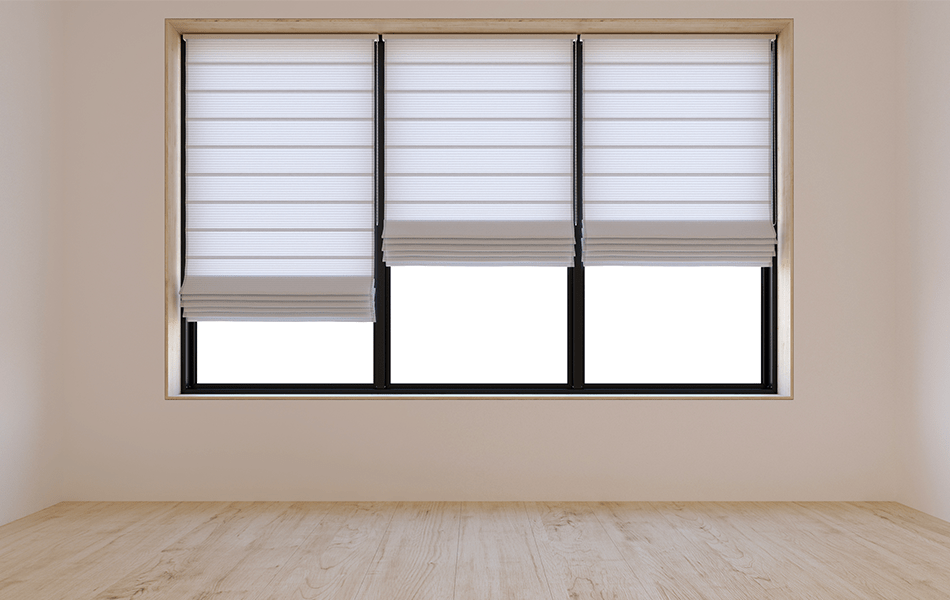Light, ventilation, and scenic views — these are the purposes a window fulfills in every home or any infrastructure. However, window poses privacy issues and unwanted audiences from the outside premises. But, these are not good reasons to lessen or remove windows in your home. Windows should not be seen as an inconvenience especially that it can help promote well-being and a sustainable daily living. Nevertheless, applying various window treatments will do the job to avoid these problems.
Why Are Windows Essential in Every House?
If you are not fond of natural lighting from the sun, you may be thinking of closing your windows for good or turning it into a wall. This decision may force you to sacrifice the following benefits of windows in your home.
Light Therapy
Exposure to natural light helps in treating several disorders especially in preventing mental health problems. Light impacts the brain chemistry and improves emotional health. The natural light facilitates the production of serotonin—a mood-boosting hormone that is known to be a natural anti-depressant—which decreases the chances of depression and preventing triggers on your mental health. Additionally, being exposed to the sun helps the body to improve production of melanin which is helpful in maintaining an appropriate sleeping schedule every night.
Beneficial on Daily Productivity
Natural lighting is proven to make people happy. This helps in establishing a good state of mind which is beneficial for accomplishing tasks effectively and efficiently.
Read More: How to Create a Home Office That Maximizes Productivity and Creativity?
Energy Efficiency
The location of windows plays a vital role in the presence of natural lighting and proper ventilation in any interior. Maximizing these natural sources likely result to a lower electricity bill. Likewise, it also helps in reducing carbon footprints brought by electricity usage.
Read More: How does the energy guide on appliances help us choose better?

Why Consider Window Treatments for Your Home?
Window treatments are any type of coverings installed over a window. These coverings may come in two general categories such as soft and hard treatments. These general types of window treatments differ in the degree of blocking needed by the house area from outside matters like the sunlight and onlookers.
Furthermore, it may also serve as an aesthetic element in an interior along with being functional. Nonetheless, window treatments are perfect for experiencing the best of both worlds — enjoying the nature’s beauty and gift and having privacy when needed.
Read More: What Type of Window Tint is Best for Your Home?
Types of Window Treatments
Various types of window treatments are available in the market for different purposes, budget, and aesthetics. As a guide, here are the basic information about the common window treatments in homes to help you realize the most appropriate option for your needs.
1. Shutters
This is a hard window treatment which is considered the most pricey and high-end option among all the alternatives. Shutters are permanent fixture installed in window frames making it less customizable. Wood and plastic are its usual materials with a rod in the middle to allow adjustment of the slats for better light control in the area.
2. Window Blinds
In minimalist setups, blinds are often used due to its simple yet elegant finishes. There are tons of options for this type of treatment such as venetian blinds, vertical blinds, wood blinds, horizontal blinds, and many more. These numerous options are made of different materials which has its own advantage on varying situations. This can be pulled up using a drawstring when you prefer to temporarily remove any blockage on your window. It also has a slatted structure suitable for easy light control.
3. Shades
This is highly similar with blinds especially in structure. What makes it different are its suitability for insulation and better light diffusion. It also comes with different types for varying purposes. The numerous shade alternatives might cause confusion for starters. Here is a list of common shade types used for homes.
A. Woven wood shades
This shade is made of wood which perfectly fits the aesthetic and furniture of the dining room. Compared to other shades, its downside is the moderate amount of light diffusion it offers though it can still greatly cover the area for privacy.
B. Cellular shades
This features a honeycomb design which made it a flexible choice for shades. The design enables it to deliver all the benefits of conventional shades and blinds. For short, it offers easy light control, privacy, and insulation. Its flexibility makes it an easy fit on any part of your home. The only remaining considerations are the design and size to suit your home’s interior design.
C. Pleated Shades
In physical appearance, pleated shades are highly similar with cellular shades. The main difference is its departure from the honeycomb design. It also lacks the additional layers of cellular shades so planning to install this for installation may not be the best choice. This does not have slats because it is made of a continuous fabric. Thus, you will have difficulty in filtering light with this shade type.
D. Roman Shades
Roman shades is one of the popular soft window treatment, known for its clean lines and neatly arranged pleats which are visible when not in use. This shade comes in similar finishes of woven wood shades but compared to the latter type, roman shades feature a degree of insulation. Additionally, this is a short window treatment so it is perfect for busy areas like the kitchen.
E. Roller Shades
These are suitable for blocking strong sunlight and maintaining a modern design in a room. Roller shades have a different mechanism which works the same way as garage doors.
Curtains
These might be the most common window treatment we see in every home. Curtains come in different types like café curtains and sheer curtains. Choosing curtains gives you a high level of freedom for customization. You can have various curtains of different thickness and design depending on your needs. Installing multiple curtain layers is also possible depending on your needs and aesthetic preferences. These are highly accessible in the market making it a practical option for housekeeping.
Read More: Curtains vs. Blinds: Which is Better?
4 Considerations for Choosing the Right Window Treatments for Your Home
The benefits of having a window definitely outweighs your thoughts of permanently closing your windows. Thus, to enjoy the best of both worlds, it is better to have window coverings your home. Although, it is not as simple as setting up a curtain rod and hanging the curtains right away. There are several considerations that you should check out to pick the best from all the available alternatives to suit your needs and aesthetics.
To preserve or enhance the appeal of your interior, you should consider the following in deciding the best treatment for your home.
1. Size, Shape, Opening of the Window
In house interiors, the usual shapes of the window are arc, circle, rectangle, and bay. The shape influences the type of coverage necessitated to facilitate privacy and appropriate blockage for sunlight. Moreover, the size of the window dictates the length and height of the window treatment that will be installed. Lastly, the manner of how the window opens must be considered to prevent hassles in times that the window would be used.
2. Purpose of Window Treatment: Aesthetic, Functional, or Both?
Installing a window treatment may be done solely for aesthetic purpose. Nonetheless, the primary functions of a window treatment are UV blocking and privacy from onlookers on the outside. Thus, it is up to the homeowner whether the window treatments in a house will be functional, aesthetically pleasing or both.
3. Function of the Room
Selecting a uniform window treatment for all your windows is not a good idea especially in terms of aesthetics of the home interior. Every space in a house has its own unique purpose so it must be considered when choosing the appropriate window treatment. For example, the bedroom and bathroom might need more blocking than the living room because these are personal spaces needing privacy. Another instance would be the home office room and study room. It may need sound dampening effects or more lighting especially during productive sessions. Nonetheless, every window treatment idea has a perfect use for varying situations and purpose of the space.
Read More: Benefit of Having an Open Floor Plan for Your House
4. Light Control in the Room
For small spaces, it is common that sections of the house has multiple purposes. For instance, bedroom can be a workplace or study area for younger individuals. With this, it is better if you have the flexibility to control the daylight illumination in the room. Specific window treatments like shades might be appropriate for this need to easily change the exposure level of the area from sunlight.

5 Useful Tips on Choosing the Best Window Treatment for Your Home
If you are a newbie on housekeeping, the cited considerations might overwhelm you during your decision-making process. To make things simpler, these useful tips may lessen your confusion in choosing the best among the window treatments in the market.
1. Decide on the Length Based on the Function of the Room
Longer curtains create a formal and less functional look. Thus, if you decide to place long curtains in a room, you should expect that it would be a hassle to move it easily when you choose to illuminate the area through the windows. Additionally, these long curtains might be an encumbrance on busy areas of a house like the kitchen, and playroom of a child. With this, understanding the purpose and traffic of the area enable you to choose the appropriate length of window treatment for your household.
2. Adding Layers for Better Light Filtering
When setting up curtains in a room, you can add multiple layers to facilitate light control. A combination of sheer curtains and heavy drapery panels are perfect for flexibility in controlling daylight illumination in interior spaces. For times that you want to light up the room without being too much exposed on UV rays, you can pull up the draped curtains and let the sheer fabric panels filter the sunlight.
3. Cohesive Design of Window Treatments
Although it is not a good idea to apply treatments uniformly in every room, the choosing window treatments of dissimilar affects the entire interior design of your home. Even though rooms have different purposes, overall look of all the window treatments must fit and maintain, if not, enhance the vibe of the home.
4. Hang Curtains Higher and Wider Than the Window Frame
Installing curtains at a height higher and a width wider than the window creates an illusion of a spacious room. This tip is useful for improving the aesthetics of small home spaces.
5. No Floor-Length Curtains in the Kitchen
Long window treatments are considered less functional compared to short window treatments because the former may cause an encumbrance in high traffic house areas like the kitchen. Thus, it is better for a short window treatment to be installed in these type of places to prevent the creation of tripping hazards.
Simple Measurement Guide for Window Treatments
Choosing and installing your desired window covering do not end with determining the window size. Measurement adjustments may improve the vibe of your home and make it look more spacious than before. Every window treatment has an ideal adjustment and here is a simple guide to help you achieve the best look for your home.
For blinds and shades, a minimum of 2 inches space is advisable if the treatment is meant to sit within the window frame. The allotted space creates a sufficient wiggle room for the blinds and shades during installation. However, there are certain types of blinds and shades that needs more wiggle room so this depth space may be adjusted accordingly to achieve the best appearance of the home interior.
For curtains and drapes, adding 6-12 inches on the width of the window size is ideal for making an illusion that the window is larger. Same goes with its height, hanging the curtain rod 4 inches above or higher is a good practice to make the area spacious in the eyes.
An Appropriate Window Covering Preserves the Benefits of Windows
Privacy issue is the biggest concern with windows. Additionally, if you do not prefer getting too much exposed with daylight, it poses another problem. But, these are not justifiable reasons to close your windows permanently whether turning it into a wall or install a permanent blockage. Window treatments serve as a compromise to preserve the benefits of having a window in a household. We, at Bria Homes, believe that windows are a vital part of a house as it has good purposes and can enhance the beauty of your home.
Speaking of a beautiful home, if you are looking at this guide to beautify your living space, whether it is an apartment or a rental house, you should consider purchasing your own home in our company. We have a lot of affordable house and lot offers which are perfect for your needs without breaking the bank. Moreover, privacy would not be worrisome in our neighborhood that is equipped with surveillance systems. So, if you are not decided with the best window treatment to install, there is less worry about safety and security.
To learn more about our offers, you may click this or book an appointment in our website. You can also reach through our social media pages.
Written By Steven Hernandez





